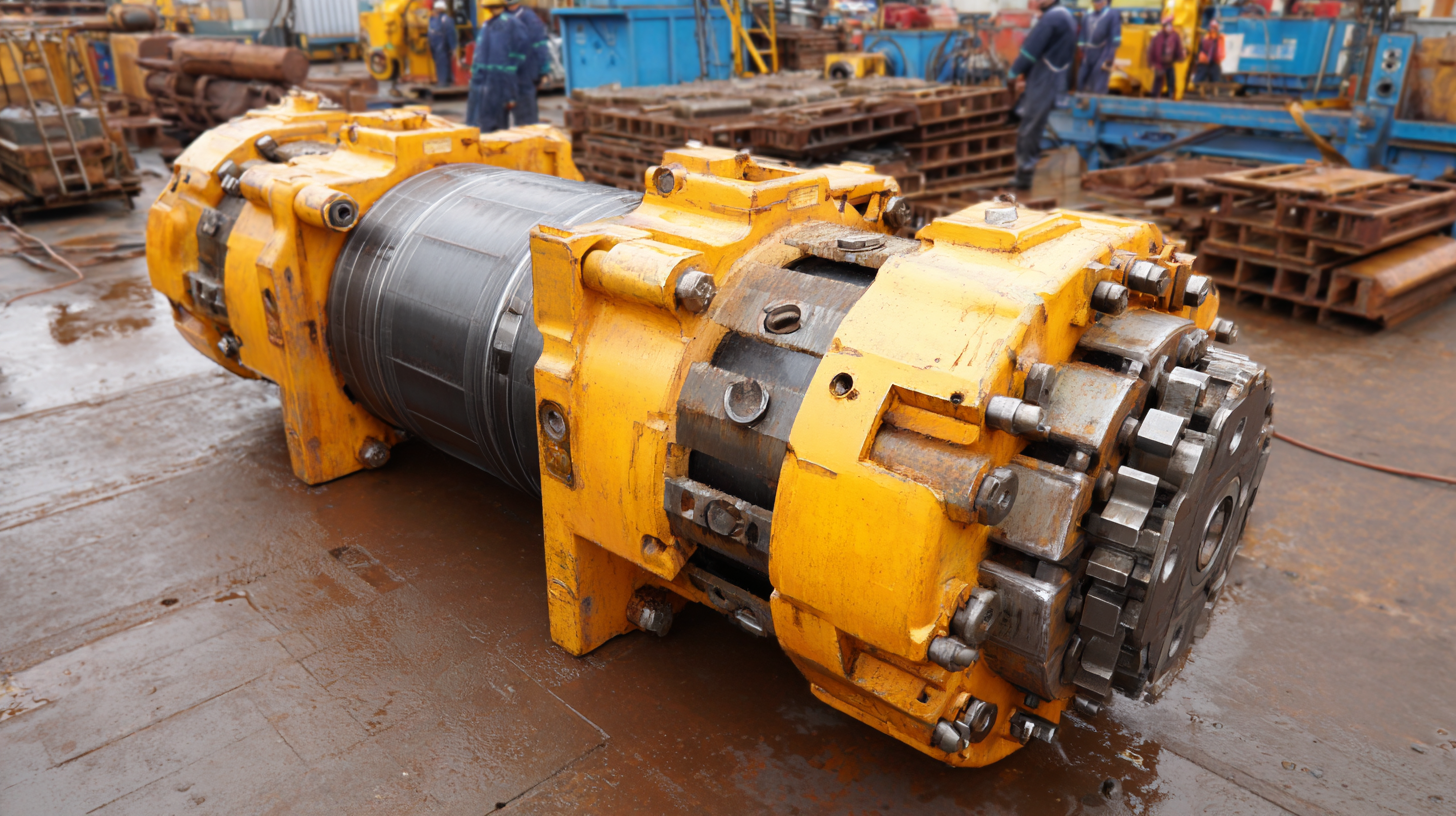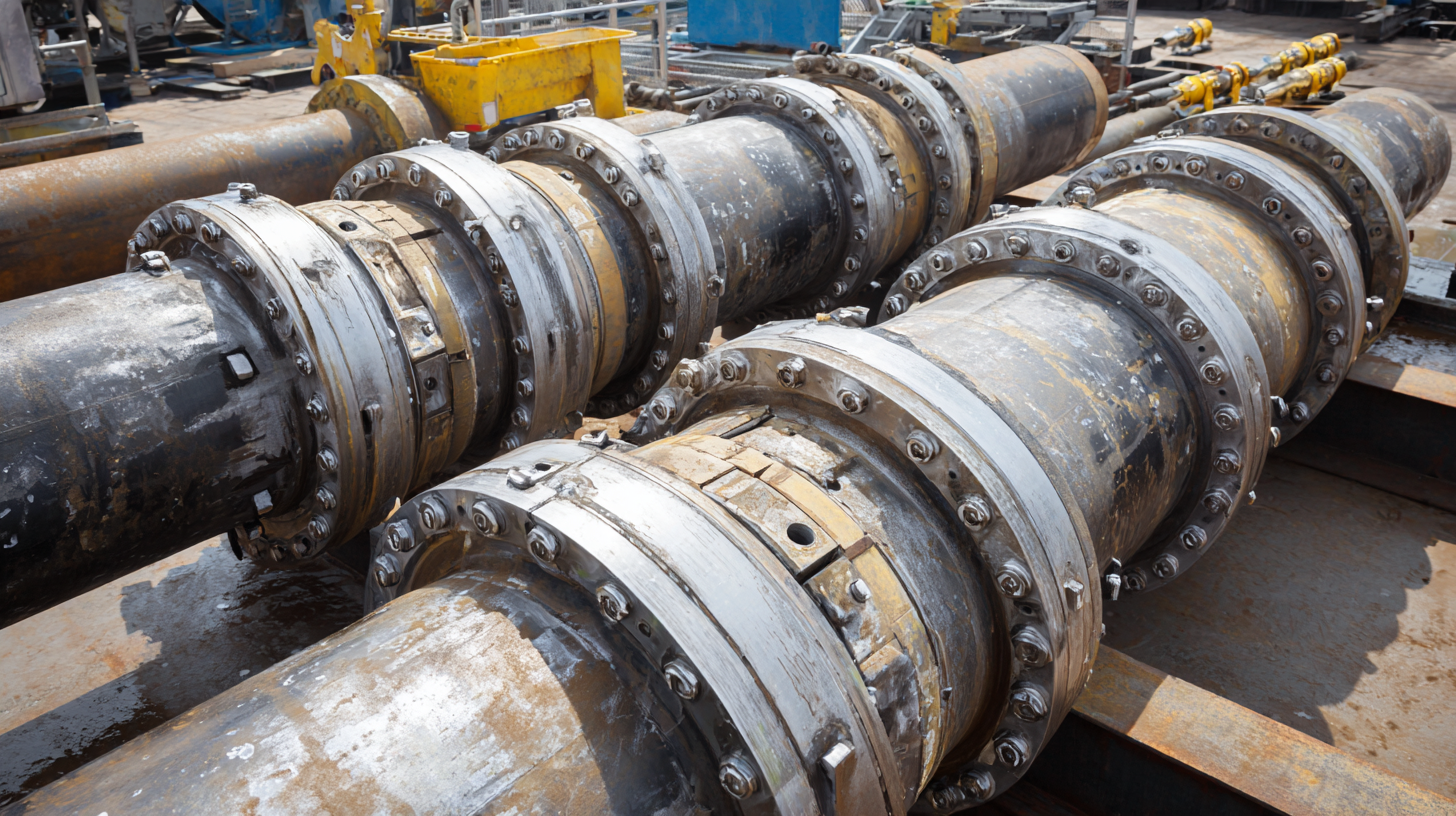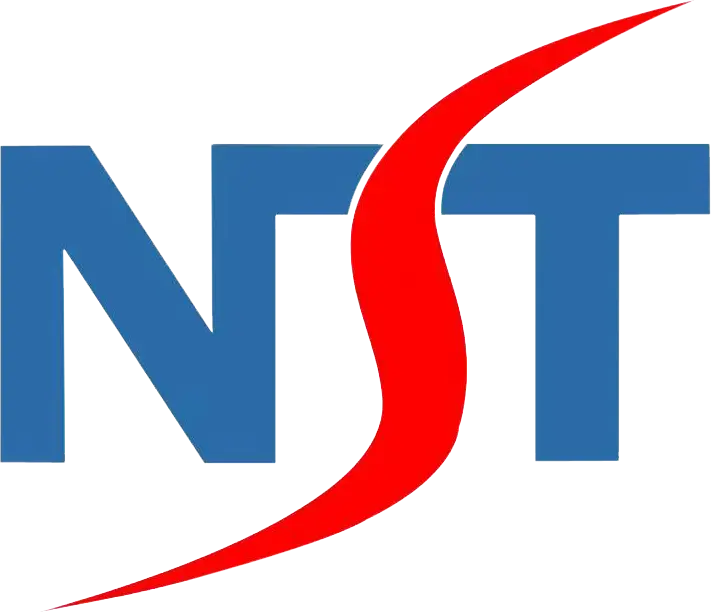Leave Your Message
In the realm of pipeline infrastructure, maintaining efficiency and reliability is paramount. With over 50% of pipeline failures attributed to inadequate maintenance and repair strategies, innovative solutions are essential for minimizing operational disruptions. Among these solutions, the Rigid Type Dismantling Joint stands out as a critical component. According to a report by the American Society of Mechanical Engineers (ASME), effective maintenance practices can reduce downtime by up to 30%, ultimately leading to significant cost savings in pipeline operations.
The Rigid Type Dismantling Joint facilitates easy access for maintenance while ensuring structural integrity, thereby enhancing the overall performance of pipeline systems. A recent study by the Pipeline Research Council International (PRCI) highlights that the incorporation of dismantling joints can decrease routine maintenance time by as much as 40%. This not only improves workflow efficiency but also prolongs the lifespan of pipeline assets by mitigating the risks associated with unplanned maintenance shutdowns.
As industries increasingly prioritize sustainability and operational efficiency, the role of Rigid Type Dismantling Joints in streamlining pipeline maintenance becomes even more critical. This article will explore the top 10 reasons why these joints are indispensable for achieving optimal pipeline performance.

Rigid type dismantling joints play a crucial role in the efficient maintenance of pipeline systems. These joints are specifically designed to facilitate easy disassembly and reassembly of pipeline components, allowing for quick access to critical areas for repair and inspection. Unlike flexible joints, rigid type dismantling joints provide a stable connection that minimizes movement and misalignment during operation, thus ensuring the integrity and efficiency of the pipeline system.
Moreover, the importance of rigid type dismantling joints extends beyond mere maintenance. They significantly reduce downtime during repair work, thereby minimizing operational disruptions. Their robust design contributes to longevity and reliability, making them an integral part of pipeline infrastructure. In addition, by enabling straightforward extraction and replacement of valves and fittings without the need for extensive modifications, these joints support adherence to safety standards and enhance the overall functionality of pipeline systems.

Rigid type dismantling joints are crucial for maintaining pipeline systems effectively. These joints allow for easy access to piping systems without the need for extensive disassembly. They facilitate quick inspections, repairs, and replacements, minimizing downtime during maintenance work. This efficiency is essential in industries where every minute of operation counts. By implementing rigid dismantling joints, operators can ensure smoother workflows and reduced operational disruptions, leading to significant cost savings in the long run.
Tips for optimizing the use of rigid dismantling joints include regularly inspecting the joints for wear and tear, as well as ensuring they are properly aligned during installation. Proper alignment not only enhances the structural integrity of the pipeline but also ensures easy access during maintenance activities. Additionally, incorporating flexible connections in conjunction with rigid dismantling joints can provide a buffer against vibrations and movement, further enhancing the reliability of the system.
Choosing rigid dismantling joints can also improve safety. By simplifying the maintenance process, these joints reduce the risks associated with prolonged exposure to hazardous pipeline conditions. It’s essential to select high-quality materials that meet industry standards, ensuring that the joints can withstand pressure changes and environmental factors over time.
| Feature | Benefit | Impact on Maintenance |
|---|---|---|
| Durability | Longer lifespan reduces replacement frequency | Less downtime, increased operational efficiency |
| Ease of Installation | Simplifies setup during maintenance | Faster maintenance processes reduce labor costs |
| Reduced Leakage | Enhanced sealing prevents fluid loss | Improves system integrity and minimizes environmental impact |
| Modularity | Facilitates easy replacement and upgrades | Allows for adaptive maintenance strategies |
| Cost-Effectiveness | Lower long-term operating costs | Improves budgeting and financial planning |
Rigid dismantling joints play a crucial role in enhancing the efficiency of pipeline maintenance, significantly reducing downtime. According to a report by the American Society of Mechanical Engineers (ASME), pipelines often face disruptions that can lead to costly repairs and lost productivity. Rigid dismantling joints facilitate quick disassembly of pipeline segments, allowing for inspections and maintenance tasks to be performed swiftly. These joints eliminate the need for extensive excavation, which can interrupt operations for days. Studies show that using rigid dismantling joints can cut maintenance downtime by up to 30%, making them an essential component for maintaining operational continuity.
**Tips:** When selecting rigid dismantling joints for your pipeline systems, consider the specifications of your existing infrastructure. Ensuring compatibility can further minimize downtime during maintenance. Additionally, regular training for maintenance personnel on the proper use of dismantling joints can lead to optimized procedures and reduced service time.
By implementing rigid dismantling joints, operators can also enhance their overall system reliability. Data from the International Pipeline & Hazardous Materials Safety Administration (PHMSA) emphasizes that efficient maintenance strategies can prevent up to 70% of pipeline failures. Adopting these joints means not only a reduction in downtime but also an improvement in safety and regulatory compliance for pipeline operations.
**Tips:** Incorporate a maintenance schedule that includes regular evaluations of your dismantling joints to ensure they remain effective and reliable. Prioritizing this can greatly extend the lifespan of the joints and improve the overall efficiency of your pipeline system.
Rigid type dismantling joints play a crucial role in ensuring efficient pipeline maintenance. These joints are designed to facilitate easy access to valves, pumps, and other components without the need for extensive system shutdowns. Key features that enhance their functionality include robust construction, precise alignment, and adjustable length, which collectively simplify routine inspections and repairs. Data from industry reports indicate that using dismantling joints can reduce maintenance time by up to 30%, allowing for quicker remediation of pipeline issues.
One of the standout advantages of rigid dismantling joints is their ability to maintain the integrity of the pipeline during disassembly and reassembly. This is achieved through their engineered design, which minimizes stress and strain on connected pipes. Moreover, the customizability of these joints ensures compatibility with various piping materials and sizes, thus making them a versatile solution across different infrastructure projects. Studies have shown that implementing rigid dismantling joints can lead to a decrease in long-term maintenance costs, with some facilities reporting savings of up to 20% annually. This highlights their essential role in optimal maintenance procedures and the overall efficiency of pipeline systems.

When it comes to the installation and maintenance of rigid type dismantling joints, ensuring proper techniques is crucial for long-term efficiency. First, having a detailed plan before installation can greatly enhance the process. It is essential to verify that all components are compatible and meet the required specifications. During installation, align the joints accurately to prevent unnecessary stress on the pipeline. Using the right tools and following the manufacturer's guidelines will help achieve a secure and reliable setup.
Maintenance is equally important for the longevity of dismantling joints. Regular inspections should be conducted to check for any signs of wear, corrosion, or misalignment. It's advisable to create a maintenance schedule that includes cleaning, lubricating moving parts, and tightening bolts to maintain optimal performance. Moreover, training personnel on the best practices for handling and troubleshooting these joints can significantly reduce downtime and enhance operational efficiency. By prioritizing meticulous installation and proactive maintenance, pipeline systems can operate smoothly and reduce the risk of costly disruptions.
This chart illustrates the efficiency improvements provided by rigid type dismantling joints in pipeline maintenance. The data indicates significant savings in preventive maintenance, a reduction in downtime, and less installation time while maintaining an effective maintenance frequency.
